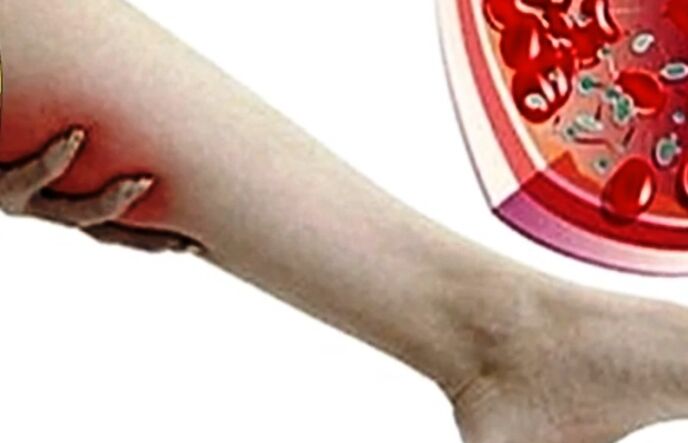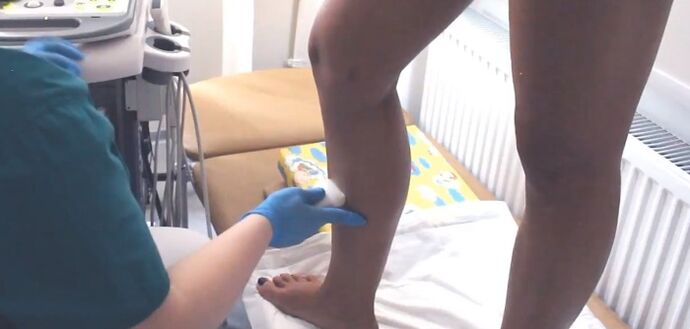The pathological processes that influence the vascular system are a serious danger of the body.This applies to any disease of this type, regardless of their scale and location.In particular, this applies to varicose veins, which in most cases affect the ship's ships.
In the modern world, varicose veins are one of the current problems, many people are subject to its development.The pathology is not just a cosmetic problem, the damage to the vases in the legs has serious consequences.Therefore, it is important to understand the mechanisms of the development of varicose veins, know its symptoms and also have ideas on the treatment.
The mechanism of development of varicose veins
Varicose veins or varicose veins are called a disease in which the vases mentioned are subjected to pathological changes in the following nature:
- Expansion, i.e. an increase in ship's light.
- Stretching, or rather, lengthening the vein.
- The thinning of the vascular wall, due to which the vein becomes more fragile and is more subject to physical damage.
- The exhaustion or the gradual destruction of the valve system, which plays a decisive role in the blood transport process in the heart.
- In the late phases of the disease due to the deformation of the veins, nodules or "vascular stars" that recall aneurysms.
All the violations described lead to two types of consequences, aesthetic and functional, in which the second type is much more weight.If we talk about the aesthetic factor, we are talking about the fact that the subcutaneous vessels increase in size, swell and appear closer to the surface of the skin, which is why they become clearly visible even with the naked eye.As the disease advances and a greater deformation of the veins, they begin to look like hugs, nodules appear, which aggravates the aesthetic aspect even more.

But the functional problems are more serious and dangerous, because we are talking about a violation of the main function of the vein: the transport of blood from the organs to the heart.Varicosis contributes to stagnant processes in the vessels, due to the exhaustion of the valves, the blood is not completely evacuated, stagnant.This leads to local toxic injuries, as well as a gradual increase in pressure in ships.In the end, in the subsequent stages of the disease, the vases cannot face excess pressure, tears appear in the thin walls, which leads to bleeding, formation of hematomas and trophic ulcers.
Classification of varicose veins
The above has repeatedly stated that the degree of damage and deformation of the veins depends on the stage of the progression of the disease.Therefore, it is worth remembering that it is customary to classify the varicose veins based on three development phases:
- The first and simplest form of the disease is compensatory.It is characterized by a minor deformation, it is often often impossible to determine without the appropriate diagnosis.The symptoms in this case are scarce or completely absent.
- The subcospection or the central phase - The veins appear on the surface of the skin, an increase, such as the deformation, are insignificant.However, the vases and vascular networks are already clearly visible and the evening of patients, a greater feeling of fatigue can be disturbed, exploding and inflating, minor pain.It is characteristic that by the morning (after night sleep or long -term rest) the symptoms disappear.
- The decompexed stadium is the most serious: we are talking about a serious defeat of the veins, of their pronounced deformation.The vases are not only highly visible, but seem tubercles and protrude on the surface of the skin, the shape of nodules, the eczema, to the hematomas.The symptoms described in the form of pain, edema and other unpleasant sensations intensify.
It is important to understand that initially varicose veins does not represent a serious danger and over time the treatment started prevents the progression of the disease.But if the treatment is not involved, there is a high risk of complications, including thrombosis, inflammatory processes in the veins, the formation of trophic ulcers, constant pain syndrome.
Factors of the development of the disease
The knowledge of the causes and factors that predispose to the development of varicose veins not only help in the fight against the pathological process, but also prevent its development.These reasons and factors are as follows:
- Genetic predisposition - In this case, we are talking about a hereditary predisposition to the weakness of the venous valves, as well as the underdevelopment of the connective tissues of the walls of the blood vessels.These development anomalies increase the development of varicose veins, since the valve system is initially subject to functional disorders.
- The professional component: the risk group is also led by people who, by virtue of their professional activity, are forced to spend a lot of time standing for a long time, in particular those who cost a lot (hairdressers, sellers, cooks, surgeons, etc.).
- Overweight
 - The accumulation of excess weight leads to an increase in the legs, moreover, in this case, the level of cholesterol in the blood increases, which also negatively influences the functioning of the vascular system.The greater the degree of obesity, the more likely the fact of the development of varicose veins is.
- The accumulation of excess weight leads to an increase in the legs, moreover, in this case, the level of cholesterol in the blood increases, which also negatively influences the functioning of the vascular system.The greater the degree of obesity, the more likely the fact of the development of varicose veins is. - Contribute to the occurrence of the varicose expansion of the veins of the pathology of blood coagulation.Due to the increase in blood platelets, the blood becomes more viscous, there is the risk of blood clots.All this prevents normal blood circulation, causing varicose veins.
- Another factor in the development of the disease are serious hormonal disorders.Women are more affected by these problems, especially during pregnancy, menopause or taking hormonal drugs.
The list shows only the main factors in the development of varicose veins, in fact there are much more.For example, we add uncomfortable shoes or walk with high heels, alcoholism, smoke, diabetes, mechanical damage to the blood vessels, etc.
Clinical image
Very often, varicose veins in the first forms of development may not show themselves at all, the symptoms appear in 2-3 phases of the progression of the disease.However, it is worth considering the symptoms, starting from the first signs:
- The first symptom that indicates the occurrence of varicose veins is fatigue in the legs.Initially, this feeling is insignificant, it makes itself felt mainly in the evening.But as the disease develops, fatigue worries more and more often, it becomes more intense.
- The feeling of squeezing and pain - begins to disturb from the second stadium, initially even closer to the evening, and in the morning they disappear completely.But as before, with the progression of varicose veins, they become more intense, in the end worried.
- The protruding veins and the vascular mesh: this feature also becomes more and more obvious as the pathological process develops.Initially, the veins are simply visible stronger than usual, in the subsequent stages that protrude, tubercles appear, the "stars" form.
- Swelling: they can start disturbing immediately, in these cases their reasons seem incomprehensible and the swelling itself is so insignificant that it practically does not feel.Over time, the legs swell more and more, which causes a lot of discomfort and improves pain.
- Convulsions - it is believed that if a person is systematically tormented by convulsions that cover the muscles of the calf or foot, it can also be signs of varicose veins.
- Hyperthermia - It occurs in the late phases of the development of the disease and is expressed in a change in the color of the skin, the skin on the legs becomes cyanotic.
Diagnostic methods
In order to treat varicose veins, the most effectively possible, an accurate understanding of which development stage is the disease and evaluate the degree of hemodynamics.To do this, you have to go through a series of diagnostic measures:

- The initial exam, during which the doctor discovers the patient complaints, collects an anamnesis and also leads a visual examination and a palpation of the problematic areas.
- Ultrasound scan for familiarization with the dynamic characteristics of the bloodstream.
- The Duplex scan of the veins is one of the most informative diagnostic methods that provides a detailed visual picture of the speed of blood flow in different parts of the vascular canal.
- Flebography using a question of contrast, which is introduced into the veins studied.
Treatment of varicose veins
The fight against varicose veins of any gravity requires contact with a phlebologist, which will carry out a processing regime based on the diagnostic data obtained.
Drug therapy
The main effect provided for by taking drugs is a reduction in pressure in the veins by eliminating stagnant processes, restoring normal blood circulation.Furthermore, within the framework of therapy, symptomatic treatment may be necessary.In general, the doctor may prescribe drugs of these groups:
- Venotonica and Flebotonica - designed to improve the outflow of sap and normalize blood circulation, perform the main treatment task.
- Drugs of the Fans Group - Stop painful sensations and also have an anti -inflammatory effect.
- Anticoagulants to reduce blood viscosity and prevent thrombosis.
- In addition, people with varicose veins are recommended to wear a special compression linen.
Only one doctor is committed to determining the need to use any medicine and his appointment.Furthermore, drug therapy does not only allow the disease to progress, it is impossible to return to deformed vases the previous state with conservative treatment methods.
Traditional medicine
Popular remedies are unable to have an equally serious therapeutic effect as traditional medicine methods.However, "grandmother's recipes" are an excellent help to pharmacological treatment, so we will consider some of the most effective recipes:
- Tomato compresses, just cut the tomato with slices and attached to the problematic areas for 15-20 minutes.Tomatoes contain a carotenoid pigment that promotes strengthening and toning veins.
- You can make a compress of potatoes, for this, put your legs with the cleaning of the potatoes and tie it for 2 hours.The same method works with the use of cabbage leaves and Kalanchoe, but the cuts must be made on these plants.
- It is also recommended to rub the feet with apple cider vinegar every day before bedtime, the course of treatment is 30 days.
Surgical treatment
Surgery in the fight against varicose veins is the most effective method that radically solves the problem and not only to limit the disease.Surgical treatment methods include:
- Sclerotherapy - the introduction of a special substance in the venous light that paste the ship, following which it disappears independently, replaced by the connective tissue.
- Exposure to the laser is applicable to the blood vessels located near the surface of the skin.Laser irradiation creates the effect of sclerosis in Vienna, following which the ship disappears.
- Flebectomy: the dressing of the deformed vein of the site with the subsequent removal of its trunk.
